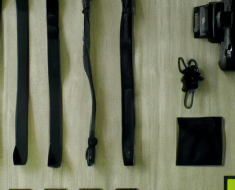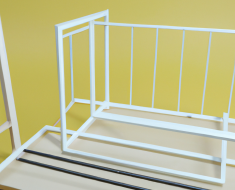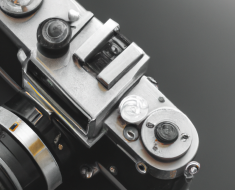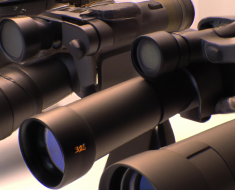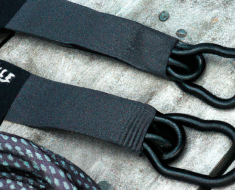“Find the perfect balance for your AR with the right buffer spring.”
Different Types of Buffer Springs for AR Rifles
When it comes to choosing the right buffer spring for your AR rifle, there are a variety of options available on the market. Each type of buffer spring serves a specific purpose and can have a significant impact on the performance of your rifle. In this article, we will discuss the different types of buffer springs for AR rifles and how to choose the right one for your specific needs.
One of the most common types of buffer springs for AR rifles is the standard buffer spring. This type of spring is typically made from high-quality steel and is designed to provide consistent recoil management and cycling performance. Standard buffer springs are a great option for most shooters, as they are reliable and durable.
Another popular option is the chrome silicon buffer spring. Chrome silicon buffer springs are known for their increased durability and resistance to wear and tear. These buffer springs are also known for providing a smoother cycling action and reducing felt recoil. If you are looking for a buffer spring that will last longer and provide improved performance, a chrome silicon buffer spring may be the right choice for you.
For shooters who are looking to reduce noise and vibration, a flat wire buffer spring may be the best option. Flat wire buffer springs are designed to reduce friction and noise during cycling, resulting in a smoother shooting experience. These buffer springs are also known for their longevity and resistance to fatigue, making them a popular choice among competitive shooters.
If you are looking to customize the recoil management of your AR rifle, an adjustable buffer spring may be the right choice for you. Adjustable buffer springs allow you to fine-tune the recoil characteristics of your rifle by adjusting the tension of the spring. This can be particularly useful for shooters who want to optimize their rifle’s performance for specific shooting conditions or ammunition types.
When choosing a buffer spring for your AR rifle, it is important to consider factors such as your shooting style, preferred ammunition types, and desired level of recoil management. It is also important to ensure that the buffer spring you choose is compatible with your rifle’s specific make and model.
In conclusion, choosing the right buffer spring for your AR rifle can have a significant impact on its performance and reliability. By considering factors such as material, design, and adjustability, you can select a buffer spring that meets your specific needs and preferences. Whether you opt for a standard steel buffer spring or a specialized flat wire or chrome silicon spring, investing in a high-quality buffer spring is essential for maximizing the performance of your AR rifle.
Factors to Consider When Choosing a Buffer Spring
If you’re a proud owner of an AR-15, you know how important it is to have the right components to ensure optimal performance. One crucial component that often gets overlooked is the buffer spring. The buffer spring plays a key role in controlling the cycling of your rifle, so choosing the right one is essential for reliable and smooth operation.
When it comes to selecting a buffer spring for your AR, there are several factors to consider. The first thing to keep in mind is the weight of your buffer. Buffer springs come in different weights to accommodate various buffer weights and rifle configurations. Matching the weight of your buffer with the appropriate buffer spring will help prevent issues such as bolt bounce or excessive recoil.
Another important factor to consider is the length of your buffer tube. Buffer springs come in different lengths to fit different buffer tube sizes. Using a buffer spring that is too short or too long for your buffer tube can lead to cycling problems and decreased reliability. Make sure to measure your buffer tube accurately before purchasing a new buffer spring.
The material of the buffer spring is also something to take into consideration. Buffer springs are typically made from either music wire or chrome silicon. Music wire springs are more affordable but may wear out faster over time. Chrome silicon springs, on the other hand, are more durable and have a longer lifespan. If you’re looking for a buffer spring that will last, investing in a chrome silicon spring might be worth it.
It’s also important to think about the intended use of your AR when selecting a buffer spring. If you’re building a competition rifle, you may want a lighter buffer spring to help reduce recoil and improve follow-up shots. On the other hand, if you’re building a rifle for tactical purposes, a heavier buffer spring may be more suitable for reliable cycling under harsh conditions.
When it comes to choosing a buffer spring for your AR, experimentation may be necessary. Every rifle is unique, and what works well for one gun may not work as effectively for another. Don’t be afraid to try out different buffer springs to find the one that works best for your specific setup.
In conclusion, selecting the right buffer spring for your AR is crucial for ensuring optimal performance and reliability. Consider factors such as buffer weight, buffer tube length, material, intended use, and don’t be afraid to experiment with different options. By taking the time to choose the right buffer spring, you can improve the overall function of your AR and enhance your shooting experience.
How to Determine the Correct Buffer Spring Weight for Your AR
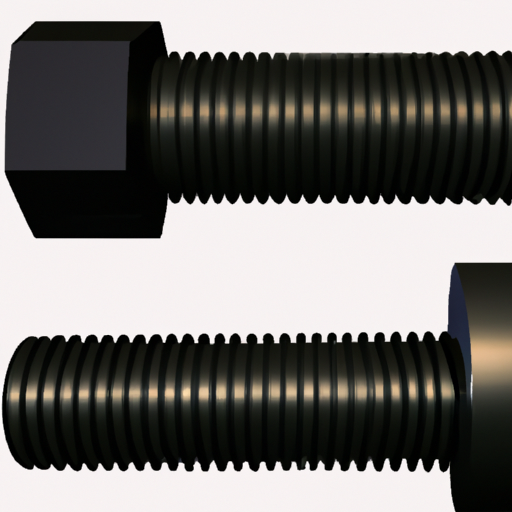
When it comes to customizing your AR-15, one of the most important factors to consider is the buffer spring. The buffer spring plays a crucial role in the function and reliability of your firearm, so choosing the right one is essential for optimal performance.
One of the first things to consider when selecting a buffer spring is the weight of your bolt carrier group. The weight of the bolt carrier group will impact how much force is required to cycle the action of your AR-15. A heavier bolt carrier group will require a heavier buffer spring to ensure smooth and reliable operation.
To determine the correct buffer spring weight for your AR-15, you will need to consider a few key factors. The first factor to consider is the length of your gas system. The length of your gas system will impact how much gas pressure is used to cycle the action of your AR-15. A longer gas system will require a heavier buffer spring to ensure proper cycling.
Another factor to consider is the type of ammunition you plan on using in your AR-15. Different types of ammunition produce varying levels of recoil, which can impact how much force is required to cycle the action of your firearm. If you plan on using heavier or higher-powered ammunition, you may need a heavier buffer spring to ensure reliable operation.
Additionally, you should consider any other modifications or accessories you have added to your AR-15. Accessories such as muzzle brakes or suppressors can impact how much recoil is generated when firing your firearm. These modifications may require a heavier buffer spring to compensate for the increased recoil.
Once you have considered these factors, you can begin selecting a buffer spring that is appropriate for your AR-15. Buffer springs are available in a variety of weights, ranging from lightweight to heavy-duty options. It is important to choose a buffer spring that matches the specific needs and requirements of your firearm.
When selecting a buffer spring, it is recommended to consult with a knowledgeable firearms expert or gunsmith. They can provide valuable insight and guidance on choosing the right buffer spring for your AR-15. Additionally, they can help ensure that the buffer spring is properly installed and functioning correctly.
In conclusion, choosing the right buffer spring for your AR-15 is essential for optimal performance and reliability. By considering factors such as bolt carrier group weight, gas system length, ammunition type, and modifications or accessories, you can select a buffer spring that meets the specific needs of your firearm. Consulting with a firearms expert or gunsmith can help ensure that the buffer spring is properly installed and functioning correctly. With the right buffer spring in place, you can enjoy smooth and reliable operation from your customized AR-15.
Testing and Troubleshooting Your Buffer Spring
Choosing the right buffer spring for your AR is crucial to ensure optimal performance and reliability. The buffer spring plays a key role in controlling the recoil of your firearm, which ultimately affects your shooting experience. There are various factors to consider when selecting a buffer spring, such as the type of ammunition you use, the length of your barrel, and your personal shooting preferences.
Before you can determine the right buffer spring for your AR, it’s important to understand how different buffer springs affect the operation of your firearm. Buffer springs come in different weights and lengths, which can impact the cycling speed of your AR. A heavier buffer spring will slow down the bolt carrier group, reducing felt recoil and potentially improving accuracy. On the other hand, a lighter buffer spring will allow for faster cycling but may increase felt recoil.
To find the right buffer spring for your AR, you may need to do some testing and troubleshooting. Start by identifying any issues you are experiencing with your current buffer spring. Are you noticing excessive recoil or malfunctions during shooting? These could be signs that your current buffer spring is not suited for your setup.
One way to test different buffer springs is to try them out at the range. Start with a standard buffer spring and shoot a few rounds to gauge how it performs. Pay attention to the recoil, cycling speed, and overall feel of the firearm. If you are not satisfied with the results, consider trying a heavier or lighter buffer spring to see if it improves performance.
Another method of testing buffer springs is to conduct dry-fire drills at home. This can help you focus on the feel of the trigger pull and cycling action without distractions. By switching out buffer springs and dry-firing your AR, you can get a better sense of how each one affects the operation of your firearm.
When troubleshooting buffer spring issues, it’s important to keep track of your testing results. Note any improvements or setbacks you experience with different buffer springs. This information can help you make an informed decision when selecting the right buffer spring for your AR.
In addition to testing different buffer springs, you may also want to consult with experienced shooters or gunsmiths for advice. They can provide valuable insights based on their own experiences with different setups and help guide you in choosing the right buffer spring for your specific needs.
Ultimately, finding the right buffer spring for your AR may require some trial and error. It’s important to be patient and persistent in testing different options until you find one that works best for you. By taking the time to test and troubleshoot your buffer spring, you can enhance the performance and reliability of your AR, leading to a more enjoyable shooting experience.
Upgrading Your AR’s Buffer Spring: What You Need to Know
If you’re a gun enthusiast who owns an AR-15, you may be considering upgrading your buffer spring. The buffer spring is a critical component of your AR’s recoil system, helping to absorb and dampen the impact of the bolt carrier group as it cycles back and forth during firing. Choosing the right buffer spring for your AR can have a significant impact on its performance, so it’s important to understand the different options available and how they can affect your shooting experience.
When it comes to selecting a buffer spring for your AR, there are a few key factors to consider. The first is the weight of your buffer. Buffer springs are designed to work in conjunction with specific buffer weights, so it’s important to choose a spring that is compatible with the weight of your buffer. If you’re unsure what weight buffer you have, check the manufacturer’s specifications or consult with a gunsmith to determine the appropriate spring weight for your setup.
Another important factor to consider when choosing a buffer spring is the material it is made from. Buffer springs are typically constructed from either music wire or chrome silicon. Music wire springs are more common and tend to be less expensive, but they can wear out more quickly than chrome silicon springs. Chrome silicon springs are known for their durability and resilience, making them a popular choice among serious shooters who put their rifles through rigorous use.
In addition to weight and material, the length of the buffer spring is also an important consideration. Buffer springs come in various lengths, and choosing the right length for your AR can help ensure smooth cycling and reliable performance. If you’re unsure what length buffer spring you need, consult with a knowledgeable gunsmith or refer to your rifle’s owner’s manual for guidance.
When it comes to selecting a buffer spring for your AR, there are several options available on the market. Standard buffer springs are suitable for most shooters and provide reliable performance in a wide range of shooting conditions. However, if you’re looking to fine-tune your rifle’s recoil characteristics, there are specialized buffer springs available that offer different levels of resistance and damping.
One popular option for AR owners looking to upgrade their buffer spring is the flat-wire buffer spring. Flat-wire buffer springs are designed to provide smoother cycling and reduced felt recoil compared to traditional round-wire springs. These springs are also known for their durability and long service life, making them a popular choice among competitive shooters and firearms enthusiasts.
Another option to consider when upgrading your AR’s buffer spring is the braided wire buffer spring. Braided wire buffer springs are designed to provide consistent performance in a wide range of shooting conditions, making them an excellent choice for shooters who demand reliability and durability from their firearms. These springs offer excellent resistance to heat and corrosion, ensuring that they will perform reliably even in adverse environmental conditions.
In conclusion, choosing the right buffer spring for your AR is an important decision that can have a significant impact on your rifle’s performance. By considering factors such as weight, material, length, and design, you can select a buffer spring that meets your specific needs and preferences. Whether you’re looking for improved cycling, reduced recoil, or enhanced durability, there is a wide range of options available to help you customize your AR to suit your shooting style. Consult with a knowledgeable gunsmith or do some research on reputable manufacturers to find the perfect buffer spring for your AR-15.




